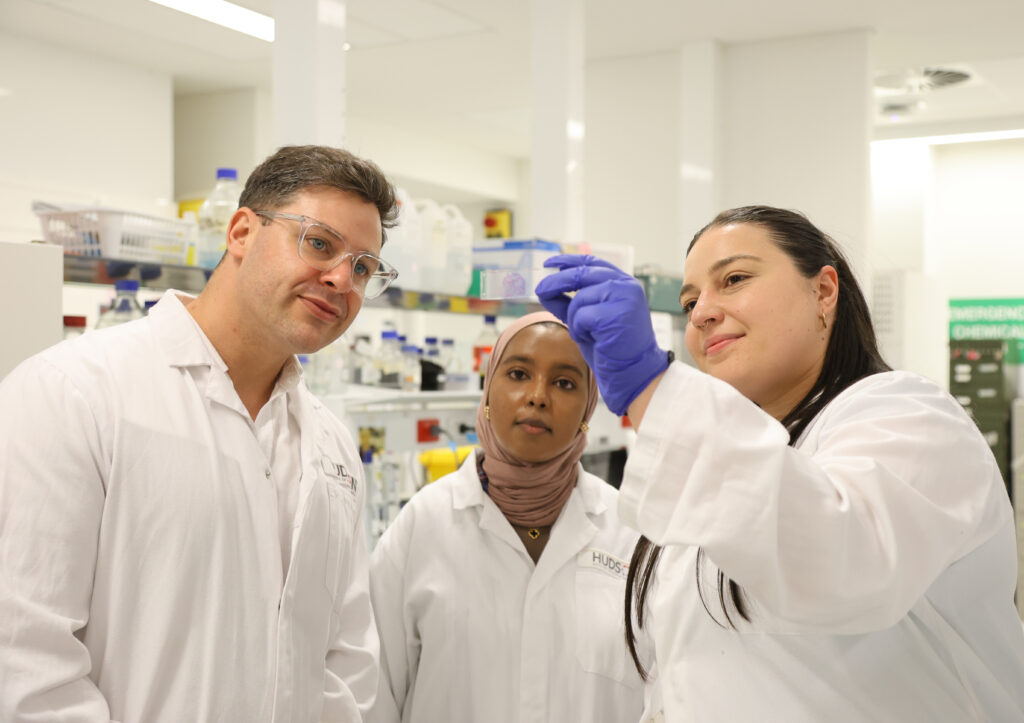Jessica Collins expected that life would change with the arrival of her first child, but nothing could have prepared her for the changes that were about to come.
Her new life as a mother was still supposed to be four months away when a sudden medical emergency meant that baby Elias was on his way, in a hurry, after just 22 weeks' gestation.
A baby so premature would have had no chance of survival until just a few years ago but, as Jessica and her husband Matthew were about to find out, medical science has come a long way in a short time.
No bigger than a soft drink can, little Elias faced the same challenges as all extremely preterm babies, namely getting enough oxygen into his system to ensure healthy growth, without causing the inflammation that could damage his tiny brain or lungs.
"My husband & I knew the professionals would lead us in the right direction," said Jessica. "Elias would not be here without them."
Sadly, being born preterm drastically increases a child's chances of developing serious developmental conditions such as cerebral palsy (CP).
Dr Rob Galinsky knows this better than most. As Head of Hudson Institute's Perinatal Inflammation and Neurophysiology research group, he studies the effects of inflammation on the newborn brain and the life-long cognitive, language and movement disorders it causes.
Along with a skilled and dedicated team, Dr Galinsky's work aims to better understand, control and, where possible, eliminate this inflammation and its devastating effects.
"My research studies the mechanisms that disrupt fetal and newborn brain development," Dr Galinsky said.
"My team's vision is to reduce the lifetime impact that cerebral palsy and other neurodevelopmental disabilities have on individuals and their families." - Dr Rob Galinsky
The Galinsky lab delivers vital fundamental research that helps improve understanding of seriously life-changing medical conditions. But this is more than theoretical science - it has a direct link to how neonatal specialists manage compromised pregnancies and difficult births.
Among his published work in 2025, Dr Galinsky's team identified a specific strain of bacterial infection that's most likely to cause a preterm birth, like Elias's, and how inflammation, induced by exposure to a bacterial infection, causes damaging inflammation to the unborn brain.

Using this new knowledge Dr Galinsky and his multidisciplinary team are now developing new therapies that can prevent or reverse the mechanisms of brain damage that they have discovered, along with medical technologies that will allow doctors to detect early signs of brain cell stress. This will allow clinicians to intervene quicker to prevent adverse outcomes for babies at risk of developing a brain injury around the time of birth.
Once the initial danger had passed, and she was preparing to take her son home for the first time, Jessica had a chance to meet Dr Galinsky and thank him personally.
"I've been able to put a face to someone who put in the research that ended up helping my baby and me," she said. "If people weren't dedicating their lives and careers to helping people like Elias & me, then we wouldn't be where we are now."
The old adage "prevention is better than cure" can be applied to many fields of medicine, but nowhere more than in newborn health.
Six months into his young life - and just 2 months past his original due date - Little Elias and his grateful family are living proof.








